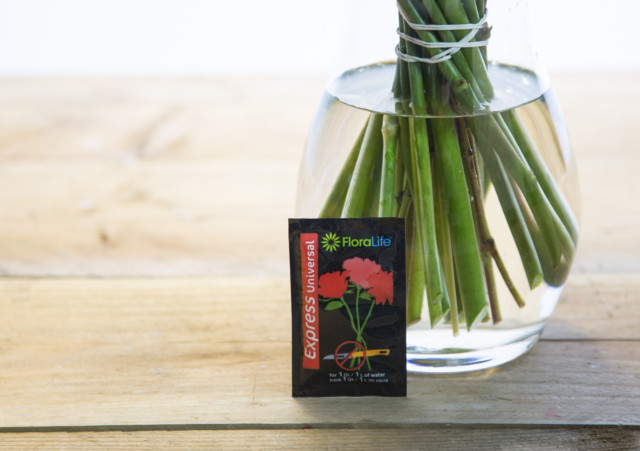Why is it important to use flower food?
While a flower is still attached to a plant with roots, it receives nourishment which allows it to grow and develop. When the flower is cut from the plant it loses its source of nourishment and water. Fresh cut flower food was developed to simulate the flower’s originate environment and allow for the flower to fully develop and open. Used properly, flower food will greatly increase the vase life and provide greater enjoyment to the customer.
Here are the key functions of a fresh flower food.
- Nutritional Source - Plants produce sugar through photosynthesis from water, carbon dioxide, and sunlight. When a flower is cut from the plant, photosynthesis is no longer an option for the production of sugar. FloraLife® flower food provides a nutrient supplement to assure the continuation of development of the flower bud into a fully opened and beautiful flower. With the use of flower food, the flower will perform better in terms of size, color, and vase life.
- Hydration - Flower food helps lower the pH which keeps the water and food conducting system in flowers working at maximum efficiency. When a flower has been dehydrated through the normal course of postharvest and shipping it needs a jump-start. When the pH of a solution if more acidic, the molecules are more hydrophilic. They tend to stick together more. A good flower food includes an agent to lower the pH of the solution which encourages hydration, keeping the tiny tubes, or vessels, in the stem continually drawing up water.
- Stem Unplugger - From grower to end consumer in the transport chain, a flower is likely to be exposed to debris which can clog the stems, resulting in the reduction of ability to take up water and nutrients. This blockage can easily shorten the life of a flower and result in a higher percentage of non-usable products by the retailer, or even an unhappy customer. Flower food includes a special ingredient to keep the water uptake flowing.
Homemade flower food
Homemade versions, or recipes, of flower food do not contain all the necessary ingredients vital to sustaining flower life. Aunt Martha’s old recipe recommendation of using copper pennies, aspirin, soda, or chlorine in water, for example, are ineffective and can end up costing you more than the cost of commercially produced flower food. It is important to make sure the end consumer’s flowers are fully developed and long lasting. This in turn results in repeat flower sales. If the consumer’s overall perception of flowers is that they do not last as long as they should, then they may turn to alternative gift ideas, hurting the floral industry as a whole.


